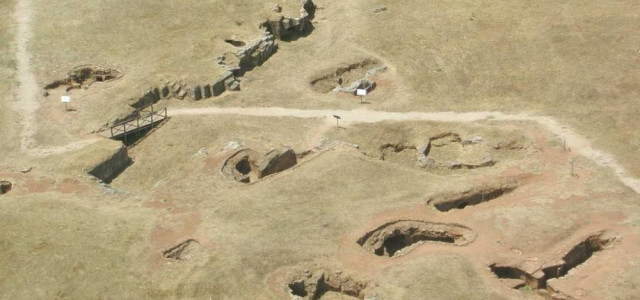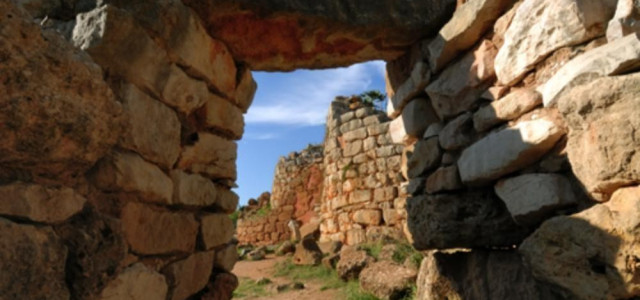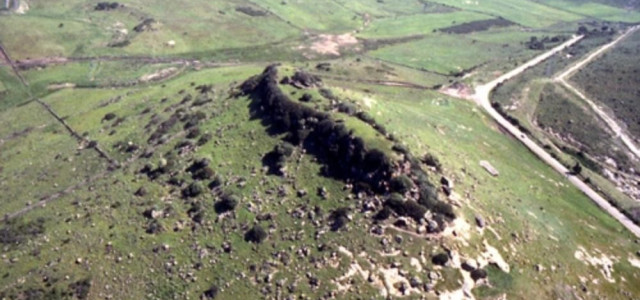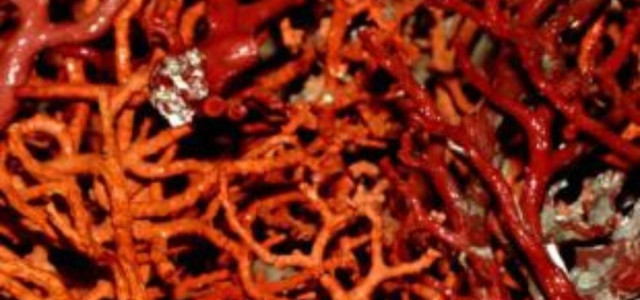Alghero
Alghero (Italian pronunciation: [alˈɡɛro]; Catalan: L'Alguer, pronounced: [ɫəɫˈɣe], locally: [lalˈɣe]; Sardinian: S'Alighèra; Sassarese: La Liéra), is a town of about 44,000 inhabitants in Italy. It lies in the province of Sassari in northwestern Sardinia, next to the Mediterranean Sea. The name Alghero comes from the medieval Latin Aleguerium, meaning stagnation of algae (Posidonia oceanica, actually a seagrass) on the coast. The Catalan language is co-official in the city, unique in Italy. History The area of today's Alghero has been settled since pre-historic times. The so-called Ozieri culture was present here in the 4th millennium BC; while the Nuraghe civilization was present in the area around 1500 BC. Due to its strategic position in the Mediterranean Sea, Alghero was built around a fortified port, founded around 1102 by the Genoese Doria family. The Doria ruled it for centuries, apart from a brief period under the rule of Pisa (1283–84). In 1353 it was captured by the forces of the Crown of Aragon under Bernardo de Cabrera; in 1372, following several revolts, the indigenous Sardinian and Genoese population was expelled, and Alghero could later grow in number because of the arrival of Catalan colonists. In the early 16th century Alghero received the status of King's City (ciutat de l'Alguer) and developed economically. The Aragonese were followed by the Spanish Habsburgs, whose dominion, ending in 1702, brought some stylish elegance to the city. In 1720 Alghero and Sardinia were handed over to the Piedmont based House of Savoy. Around 1750 a wide channel was excavated to improve the defensive position of the peninsula. In 1821 famine led to a revolt of the population, which was bloodily suppressed. At the end of the same century Alghero was de-militarised and, during the Fascist era, part of the surrounding marshes was reclaimed and the suburbs of Fertilia and S.M. La Palma were founded. During World War II (1943) Alghero was bombed, and its historical centre suffered heavy damage. The presence of malaria in the countryside was finally overcome in the 1950s. Since then, Alghero has become a popular tourist resort. Language In Alghero, a dialect of Catalan is spoken, introduced when Catalan settlers repopulated the town after the Crown of Aragon conquered the city from the Genoese in 1353 and subsequently expelled the indigenous population. Catalan was replaced as the official language by Spanish in the 17th century, then by Italian. The most recent linguistic research conducted showed that 22.4% of the population speak Algherese Catalan as a first language and around 60% have some understanding of the language. Currently, there has been a revival of the arts in Algherese Catalan, with singers such as Franca Masu performing original compositions in the language. It is noted, however, that after the rural exodus of the surrounding villages towards the city, much of the population speaks or has some proficiency in Sardinian as well, in addition to Italian and Catalan. Historically, moreover, the spread of Catalan was limited to the city "Intra Moenia" and part of the coast, given that the countryside has always been highly frequented by the Sardinian speaking-community (as evidenced by the place names: Sa Segada, Pala Pirastru, etc.). Main sights Palazzo Carcassona. Alghero Cathedral (Cattedrale di Santa Maria Immacolata di Alghero). Begun in 1570, it was opened in 1593 but finished and consecrated only in 1730. The church original was in Catalan-Gothic style, as it can be seen in the five chapels of the presbytery, which also include the base of the bell tower. The nave and the two aisles are instead in Late Renaissance style. In the 20th century a Neo-Classical narthex was added to the façade, changing abruptly its appearance. The church of St. Francis (1360, rebuilt in the late 16th century). Original Catalan-Gothic parts can be seen over the high altar, the presbytery chapels and the San Sacramento Chapel. The bell tower is from the first half of the 16th century. The church of St. Michael. The Madonna del Santo Rosario. The Torre del Portal, built at the expense of the Jewish community of Alghero in 1360, and the Tower dell'Esperò Reial (16th century). Palazzo D'Albis (16th century), a typical example of Aragonese architecture of the 16th century. In the October 1541 it housed the Emperor Charles V. Neptune's Grotto Porto Conte Capo Caccia The area northwest of Alghero Bay with Porto Conte and the relatives Punta Giglio and Capo Caccia limestone promontory offer several fields of study and activities, from geology to biology studies and researches, to sport and adventures like caving scuba diving and cave-diving, trekking and climbing. There are more than 300 discovered caves upon and under water and semisubmerged. Neptune's Grotte is the most famous and visited, thanks to the accessibility and connection by ferries and stepped path from land. Underwater the Nereo Cave, considered the biggest and spectacular marine underwater cave of the Mediterranean Sea and Europe, is the most visited by scuba-divers. Some 100 Nuraghe remains can be seen in the neighbouring areas of Sant'Imbenia (including also a Phoenician necropolis and Roman remains near the airport of Alghero), Palmavera and Anghelu Ruju. Books In the 1930s the Swedish writer Amelie Posse Brazdova wrote a book entitled Sardinia Side Show, where she told the complete story of 2 years she spent "interned" in Alghero old town during World War I. Twin towns Balaguer, Spain Tarragona, Spain Palma de Mallorca, Spain Encamp, Andorra See also Diocese of Alghero-Bosa Fertilia Airport History of Sardinia References External links City of Alghero Official website (Italian) (Catalan) Official Alghero tourism web site (English) Alghero Tourist Informations and Webcam Live (Italian) (English) (French)







